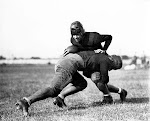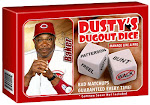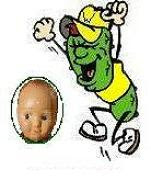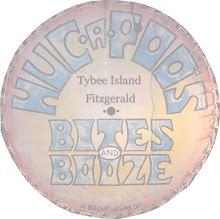
What had been a quiet slump in the fifties grew to a full-blown crisis in the sixties. The National Football League's sky-rocketing popularity put baseball's problems in bold relief. People were saying it right out loud: baseball was no longer the national pastime. Forbes magazine put a battered baseball on its cover with the headline: BASEBALL: THE BEAT-UP NATIONAL SPORT.
Football, of course, had been an American passion for nearly as long as baseball. But as a professional sport it was a poor relation. The early NFL's second-rate status was reflected in its second-tier cities: Canton, Ohio (the Bulldogs); Racine, Wisconsin (the Cardinals); Decatur, Illinois (the Staleys); and Marion, Ohio (the Oorang Indians---an all-Indian team featuring Jim Thorpe and sponsored by the Oorang dog kennels). Broke teams were as common as broken tackles. Franchises shuttled in and out of the league like players in and out of a game. Pro football for long was eclipsed by college football; in the late fifties its twelve teams were still largely concentrated in frost-belt cities.
Then, in 1960, Alvin Ray "Pete" Rozelle became its leader. He was a PR man who had fallen into the position of GM at the Los Angeles Rams. When NFL commissioner Bert Bell died suddenly in 1959, the thirty-three-year-old Rozelle won the job as a compromise choice.
Nobody knew Pete Rozelle from a goalpost, but Pete Rozelle sure knew something: marketing and media. His first priority was to overhaul the NFL's approach to TV. The 1958 New York Giants--Baltimore Colts championship game, decided in sudden-death overtime, had captured the nation's imagination. Televised by CBS, the game climaxed in Alan Ameche's dramatic touchdown run for the Colts, which was the talk of the nation for weeks. Knowing that TV's reach and power were growing every year, Rozelle moved brilliantly to harness the NFL's TV appeal.
. . .
Rozelle's move not only profited his league but beautifully marketed it. National TV enabled---coerced---fans to follow the total game, not just their local team. It built up interest in the championship game, no matter who was in it. It also provided two games per Sunday at standardized times---a steady, predictable diet for the nation's growing ranks of couch potatoes. Football, by its very nature, was well suited for TV. Rozelle took it a step further, and made sure it revolved around TV.
. . .
Later, Rozelle launched NFL Films, to distribute the league's artful highlights movies. With its dramatic music, stentorian voices, and clear narrative lines, NFL Films vividly presented and promoted the guts and glory of pro football. "It was up to us to create the 'Gods of Autumn,'" recalled Steve Sabol, who with his father produced the reels. "We made it a larger-than-life contest, with the fate of the universe at stake."
The key to it all was what some NFLers called "league-think." Rozelle preached constantly that owners were to think of what was best for the NFL, not just their own franchise. With the exception of some stray mavericks---later, most notably, the Raiders' Al Davis---they did.
League-think wasn't all Rozelle's doing. It was rooted back in the bad old days, when owners had to hang together or hang separately. . . .
Rozelle's TV plan wouldn't have flown but for the assent of owners like Wellington Mara of the New York Giants and George Halas of the Chicago Bears. They willingly gave up the advantages of their big-city markets. "There was a recognition by the right people that the league was no stronger than the weakest link," recalled Jim Finks, then the Minnesota Vikings GM.












.jpg)






No comments:
Post a Comment